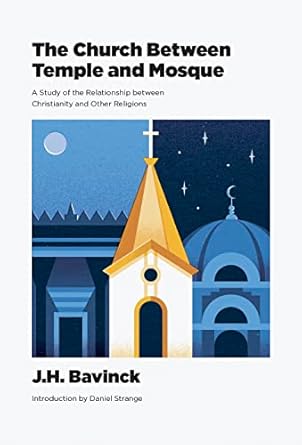A Brief Book Summary from Books At a Glance
by Steve West
Table of Contents
Introduction
I The Christian Faith and Other Religions
II Religions and Religious Consciousness
Part One: The Continent of the Universal Religious Consciousness
III Man’s Sense of Cosmic Relationship
IV The Religious Norm
V Between Activity and Passivity
VI Thirst After Redemption
VII The Great Unknown in the Background
VIII Religious Consciousness and Its Uncertainties
Part Two: In the Light of God
IX Human Religion in God’s Sight
X The Bible Is Different
XI Man as an Atom in the Cosmic Totality
XII The Law of the Kingdom
XIII Man’s Bondage
XIV Salvation and the Kingdom
XV God and the World
XVI The Church and Its Message
Summary
Introduction
From the earliest times of the Christian movement, the relationship between the church and other religions was an important issue for believers. As the church spread, as missionaries went out, and later on as Europe met with Islam, more and more thought was given to this topic. To talk about Christianity and other religions already implies that there are similarities and dissimilarities between them. They can be compared, but there are significant differences between them; in fact, Christianity claims a qualitative uniqueness. It is inescapable that religion is a worldwide phenomenon, and various explanations have been proposed for why this is the case. Many locate religion in the nature, mind, emotion, or psyche of human beings, but others see it as a response to the deity and divine revelation. In Christianity, God’s gracious self-disclosure comes to us climactically in the person of the incarnate Lord Jesus Christ. Religion, therefore, can be a proper response to God or a flight from him.
When we look at the relationship between religion and culture, we see that religion is a social force. Christianity, Hinduism, and Islam all shape and define communities. Nonetheless, these religions also have solitary individuals who pursue truth largely on their own. As society moves towards secularism, the religious-social bonds decay, and societal disintegration occurs. For many, new materialistic views of human life, ethics, etc., lead to despair and meaninglessness.
There is no time we know of in human history where religion was absent. Although there are some differences between ancient philosophical-rational religions and mystery religions, there are also many areas of overlap. Nature religions did not rely on special revelation the way that other religions did, but it is still impossible to make absolute distinctions between nature religions and other kinds. Every scheme for differentiating one religion from another has strengths and weaknesses. Religious-consciousness is found all over the world, and there are many similarities in religious rituals and customs. Human beings are the same everywhere, and have the same longings, desires, and needs. Every person is faced with five magnetic points: 1. The relationship between myself and the cosmos; 2. The relationship between myself and moral norms, rules; 3. Action and destiny, or the riddle of my existence; 4. My need for salvation; 5. The relationship between myself and the Truth, the Supreme Power. How we answer these questions affects how we live our entire lives.
Part One: The Continent of the Universal Religious Consciousness
Human beings sometimes feel themselves to be merely a speck in the universe, but at other times, we feel like lords over everything. We distinguish ourselves from nature and yet feel that we are also a part of it. This reality has played a large part in religions. Primitive religions (animism) are widespread and tenacious. They share many common features but are also nuanced to every unique location. Usually they are not simply concerned with local spirits but also have mythological cosmogonies and believe in higher gods or a supreme being. Dualism is also common. Hinduism has much in common with primitive religions, but it is also filled with profound philosophical ideas and concepts. Hindus have a rich mythology about the creation of the world and the nature of the gods, which attempts to explain the presence of good and evil. Salvation comes from escaping the cycle of karma and being absorbed into oneness. Human beings are a small part of the whole universe, and can transcend the chaos of experience. When other religions are studied, the same questions about origins, human nature, and salvation recur. Contemporary people feel themselves to be above nature, but also a part of it; they feel lost and confused. . . .
[To continue reading this summary, please see below....]The remainder of this article is premium content. Become a member to continue reading.
Already have an account? Sign In
